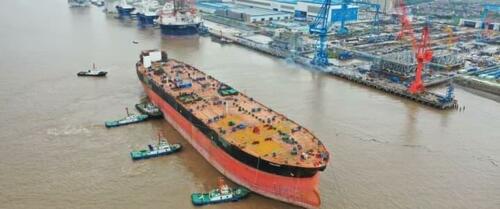China Steps Up Game With 1st ‘Floating Oil Factory’
By Alex Kimani of Oilprice.com
China has delivered its first smart floating production storage and offloading (FPSO) with land-sea integrated operation system, marking a breakthrough in the country’s application of the digital twin technology.
The offshore oil and gas FPSO with a storage capacity of 100,000 tons is the first of its kind in China and employs diverse cutting-edge technologies including artificial intelligence (AI), edge computing, cloud computing, big data and the internet of things (IoT). The ship can process oil and gas on the sea thus eliminating the need for piping from offshore rigs to onshore factories.
The ship is equipped with more than 8,000 sensors that monitor temperature, pressure and liquid level data and transmits it to the server room. In addition to the on-board system, China has also built a digital twin of the ship onshore in the smart control center in Shenzhen City, a full 1,000 kilometers away from the real ship. The digital twin, a virtual replica of the offshore ship, will be used to monitor the production process in real-time.
Floating oil and gas processing and storage platforms are becoming increasingly popular. Last year, Demand for LNG floating storage and regasification units (LNG-FSRUs) recorded a sharp increase as Europe scrambled to fill its gas stores ahead of winter. Demand for LNG imports intensified after the ruptures on the key Nord Stream pipeline system quashed any prospect of Russia turning its gas taps back on. This forced dozens of countries in Europe to turn to FSRUs or floating LNG terminals, which are essentially mobile terminals that unload the super-chilled fuel and pipe it into onshore networks.
Currently, there are 48 FSRUs in operation globally, with Rystad Energy revealing that all but six of them are locked into term charters.
According to energy think-tank Ember, the EU has lined up plans for as many as 19 new FSRU projects at an estimated cost of €9.5bn.
The biggest beneficiaries are Korean shipbuilding, for whom FSRUs are a major revenue-generator. South Korea is the definitive world leader in the FSRU sector, and recently built the country’s first ammonia FSRU.



